Putting is often seen as the heart of the game. In fact, statistics show that around 40% of all strokes are made on the green. If you want to lower your scores and gain confidence on the course, improving your putting game is essential. So, let’s dive into the techniques, drills, and tips that will make you a better putter in no time.
Understanding the Importance of Putting
Before we dive into practical tips, it’s crucial to understand why putting is so essential. A round consists of various components, from drives off the tee to approach shots that land on the green. But once you’re on the green, every stroke matters significantly. Effective putting can mean the difference between a good score and a frustrating day on the course.
Why Are We So Bad at Putting?
- Pressure: The closer you are to the hole, the more pressure you might feel.
- Distance Control: Many players struggle with distance, leading to either over-hitting or leaving the ball short.
- Green Reading: Understanding slopes and grain can be complex.
- Inconsistent Setup: If your stance and grip vary, your performance will likely suffer.
Understanding these challenges is the first step to overcoming them.
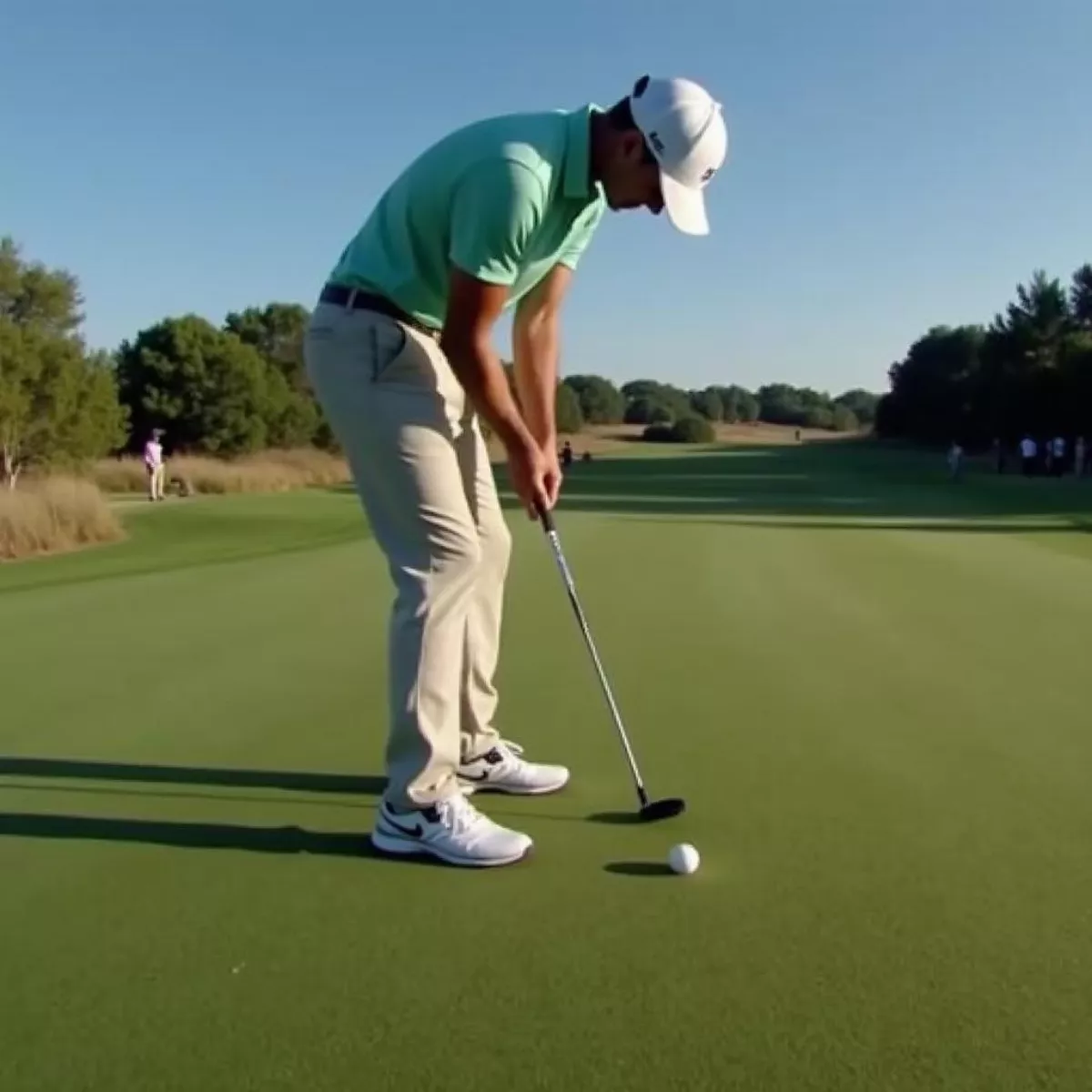 Golfer putting on the green
Golfer putting on the green
Key Components of Effective Putting
To improve your putting, focus on these four key areas:
- Grip: The way you hold your putter greatly influences control and accuracy.
- Stance and Alignment: Your body position determines how well you’ll strike the ball.
- Stroke Mechanics: A consistent and stable stroke can mean the difference between sinking and missing easy putts.
- Reading Greens: Mastering the art of reading greens will help you make better decisions about your line and speed.
The Perfect Grip
Choosing the right grip is pivotal. Here’s a quick breakdown of the most common putting grips:
| Grip Type | Description |
|---|---|
| Standard Grip | This is the most common; hands are side-by-side on the handle. |
| Reverse Overlap | The index finger of the top hand overlaps the other fingers for added control. |
| Cross-Handed | The left hand (for right-handed golfers) is lower on the grip, which can reduce tension. |
| Claw Grip | The putter is held with three fingers; ideal for those who struggle with grip strain. |
Tip: Experiment with each grip to find what feels comfortable and provides you with the best control.
The Right Stance
- Feet Shoulder-Width Apart: This provides stability while putting.
- Knees Slightly Bent: Helps maintain balance throughout the stroke.
- Weight Distribution: Have your weight on the balls of your feet, not your heels.
Pro Tip: Center your body over the ball, minimizing any side movement.
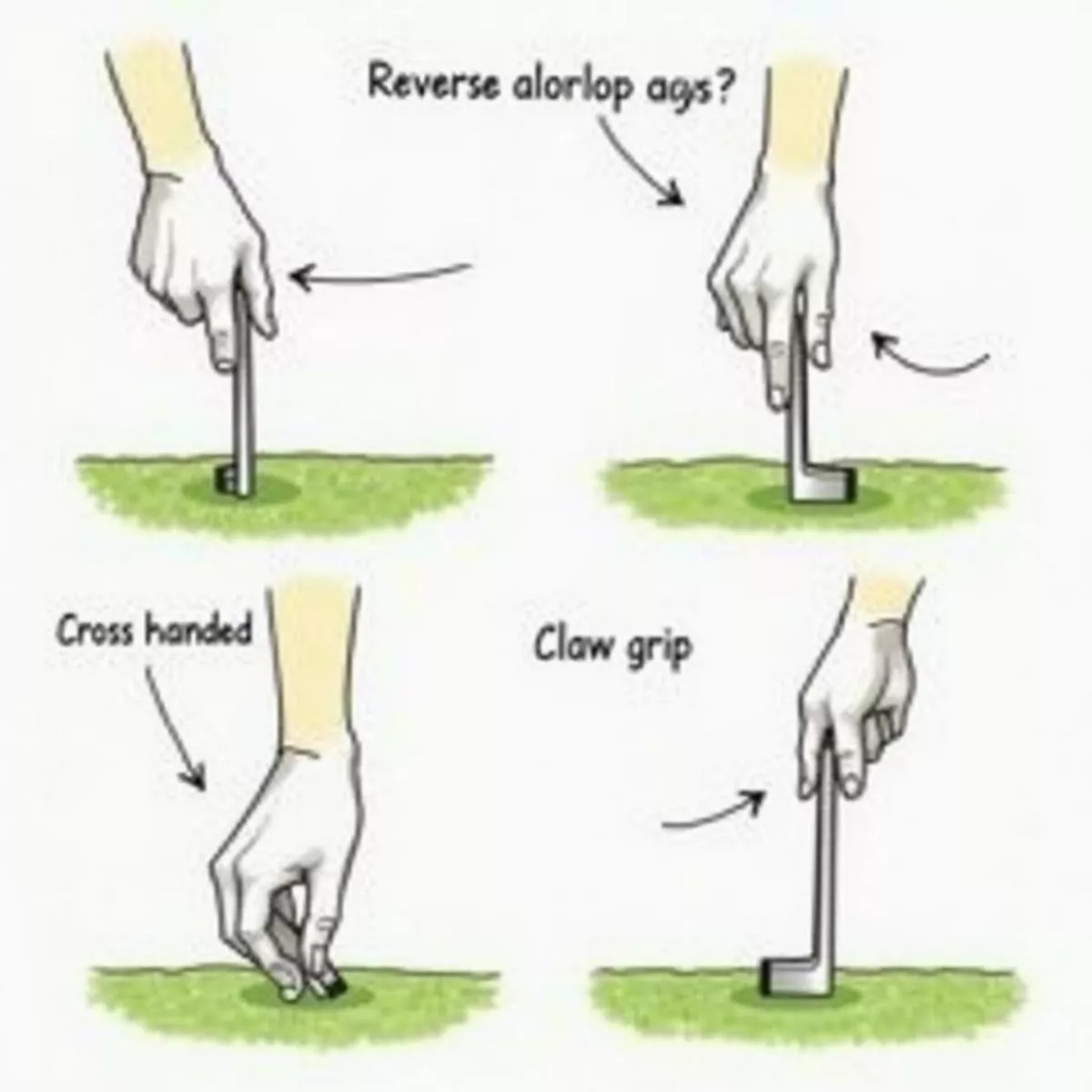 Different golf putting grips
Different golf putting grips
Perfecting Your Stroke Mechanics
- Takeaway: Start the putter head straight back to ensure a clean strike.
- Follow-Through: Your follow-through should mirror your takeaway; this promotes consistency.
- Speed Control: Aim to have a smooth, even stroke for better distance touch.
Read the Greens Like a Pro
- Look for Slope and Grain: Note the direction the grass grows; it can affect speed.
- Visualize Your Line: Before you putt, walk around and imagine the trajectory.
Useful Drills to Improve Your Putting Game
1. The Ladder Drill
- Place tees in a straight line at varying distances (1, 2, 4, 6 feet).
- Practice sinking your putts from each designated space.
- This helps with both distance control and accuracy.
2. The Around-the-World Drill
- Set up balls in a circle around the hole, each about 3 feet away.
- Try to make all the putts in a row.
- This will help you adapt to different angles.
3. One-Handed Putting
- Practice putting with just your dominant hand.
- This strengthens your wrist and helps with feel.
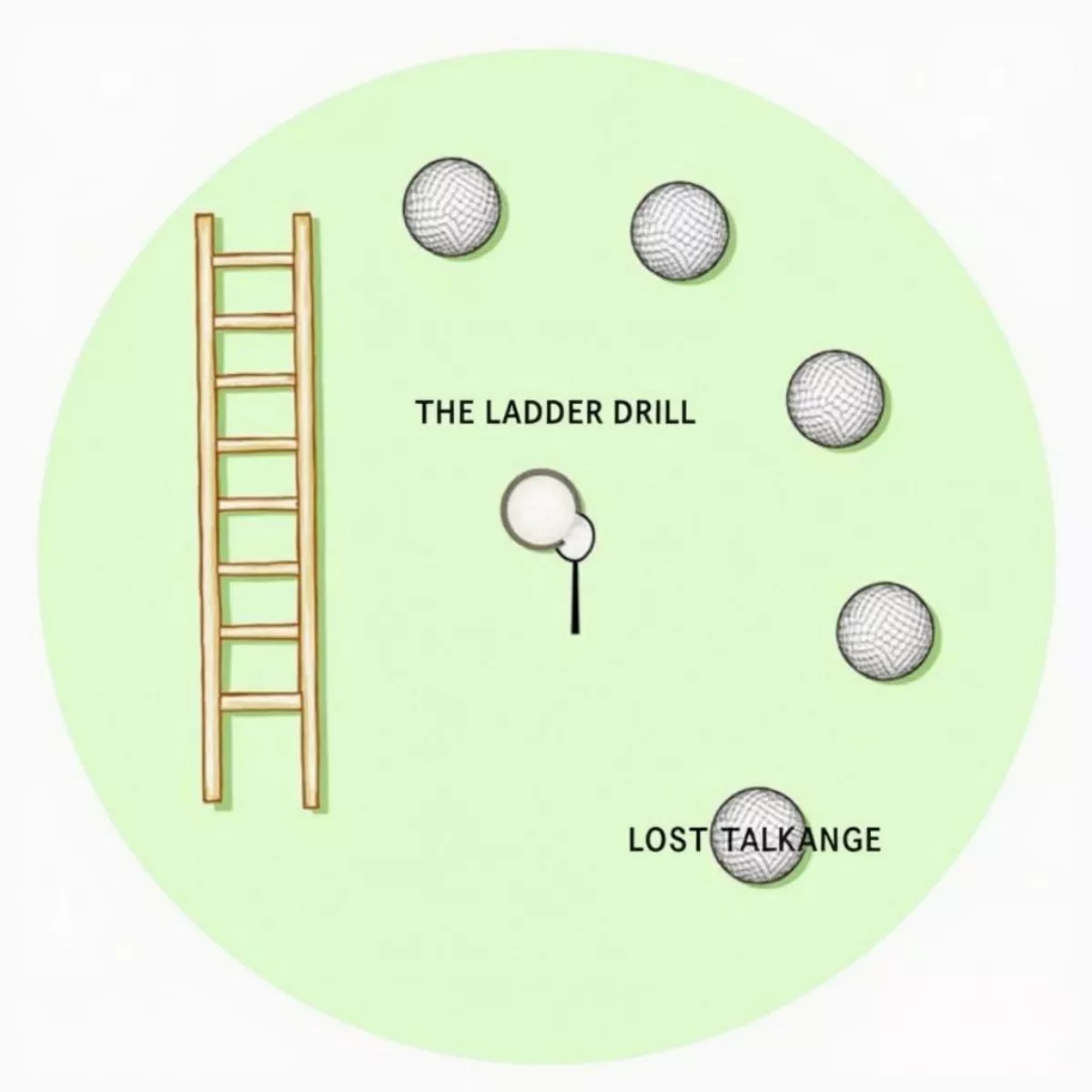 Golf putting drills illustration
Golf putting drills illustration
Mental Game of Putting
Don’t underestimate the psychological aspect of putting! Here are some strategies:
- Positive Visualization: Picture the ball going into the hole. This boosts confidence.
- Breathing Exercises: Control your breath to minimize anxiety before important putts.
Key Takeaways
- Understand the four key areas of putting: grip, stance, stroke mechanics, and green reading.
- Experiment with different grips to find the one that suits you best.
- Practice with drills like the Ladder Drill and Around-the-World to sharpen your skills.
- Master mental strategies to reduce pressure when putting in high-stakes situations.
Frequently Asked Questions (FAQ)
1. How important is putting compared to other aspects of golf?
Putting typically encompasses about 40% of your total strokes in a round, making it crucial for scoring.
2. What is the best putting grip?
There’s no one-size-fits-all answer, but many players prefer the reverse overlap grip for better control.
3. How can I improve my green reading skills?
Practice observing slope and grain on your local courses, and watch professional golfers for tips.
4. What drills are best for beginners?
Start with simple drills like the Ladder Drill to build confidence and accuracy.
5. How can I reduce anxiety when putting?
Use visualization techniques and breathing exercises to create a calm mindset before your putts.
 Golfer reading green
Golfer reading green
6. How often should I practice my putting?
Ideally, practice your putting at least two to three times a week for effective results.
7. Is it helpful to have a specific putting routine?
Absolutely! Having a pre-shot routine can help you focus and build consistency.
8. Can putting skills be transferred to other areas of golf?
Yes! Skills like touch and feel developed through putting can greatly enhance your approach and chipping.
9. What is the best way to measure improvement in putting?
Keep track of your strokes gained putting over rounds to gauge improvement.
10. Should I invest in a custom putter?
If you’re serious about improving your game, a properly fitted putter can make a significant difference.
Mastering the art of putting is not just about how good your stroke is, but also about understanding the nuances of the game. Don’t forget, practice makes perfect, and with dedication, you’ll see improvement before you know it. Happy putting!
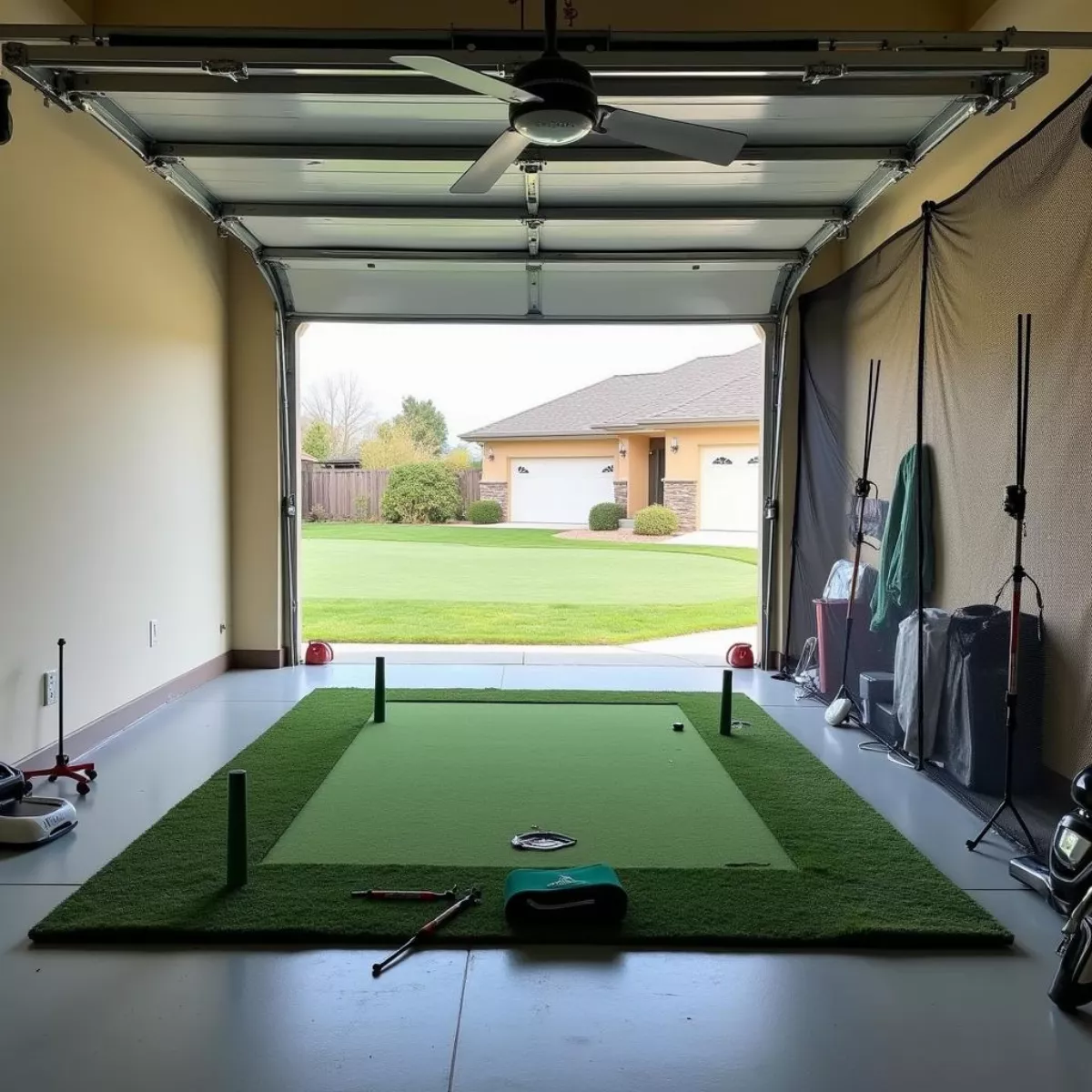
 Golfer Performing Towel Drill
Golfer Performing Towel Drill Golfer Doing Yoga Stretches
Golfer Doing Yoga Stretches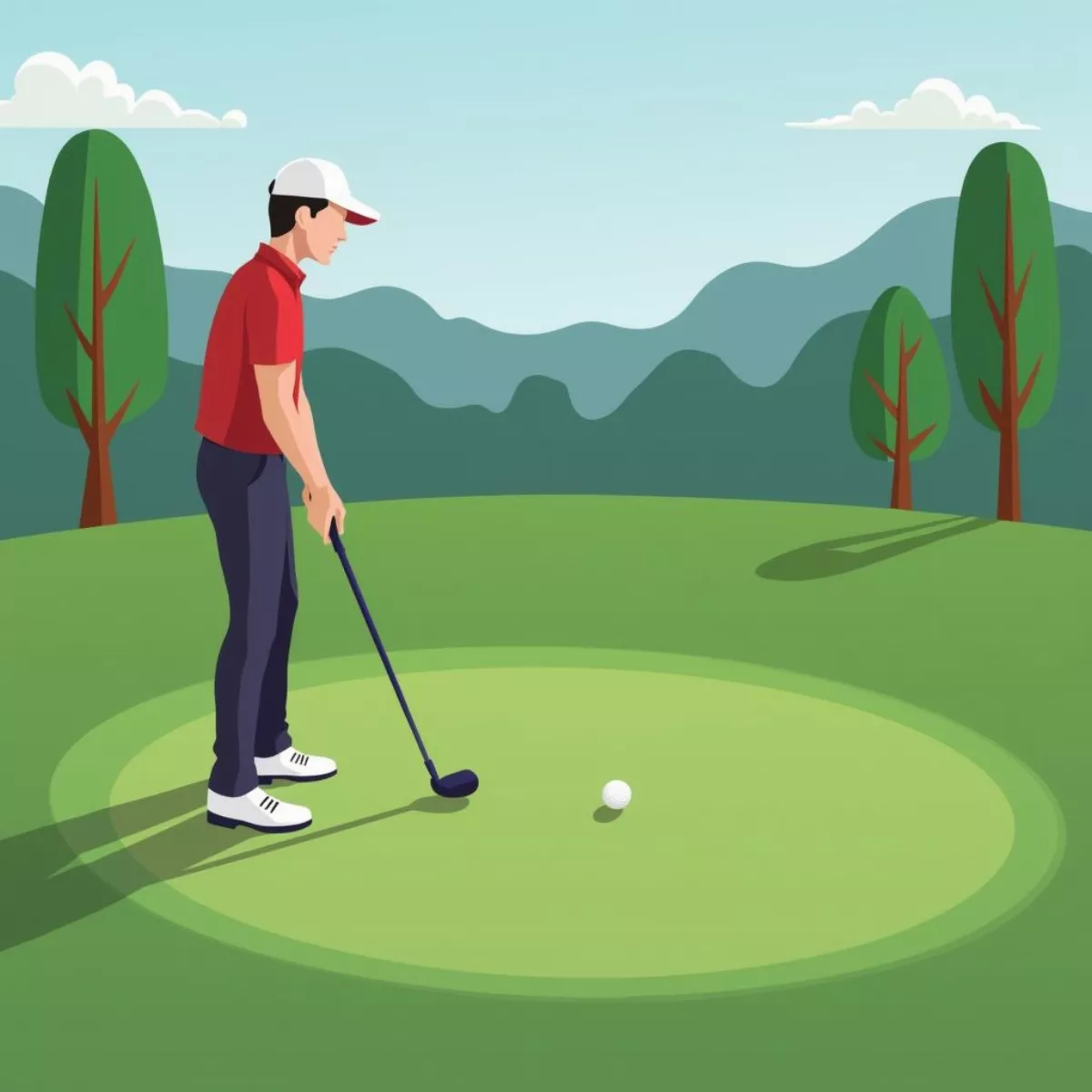 Golfer Visualizing Shot
Golfer Visualizing Shot
 Golfer reviewing swing mechanics
Golfer reviewing swing mechanics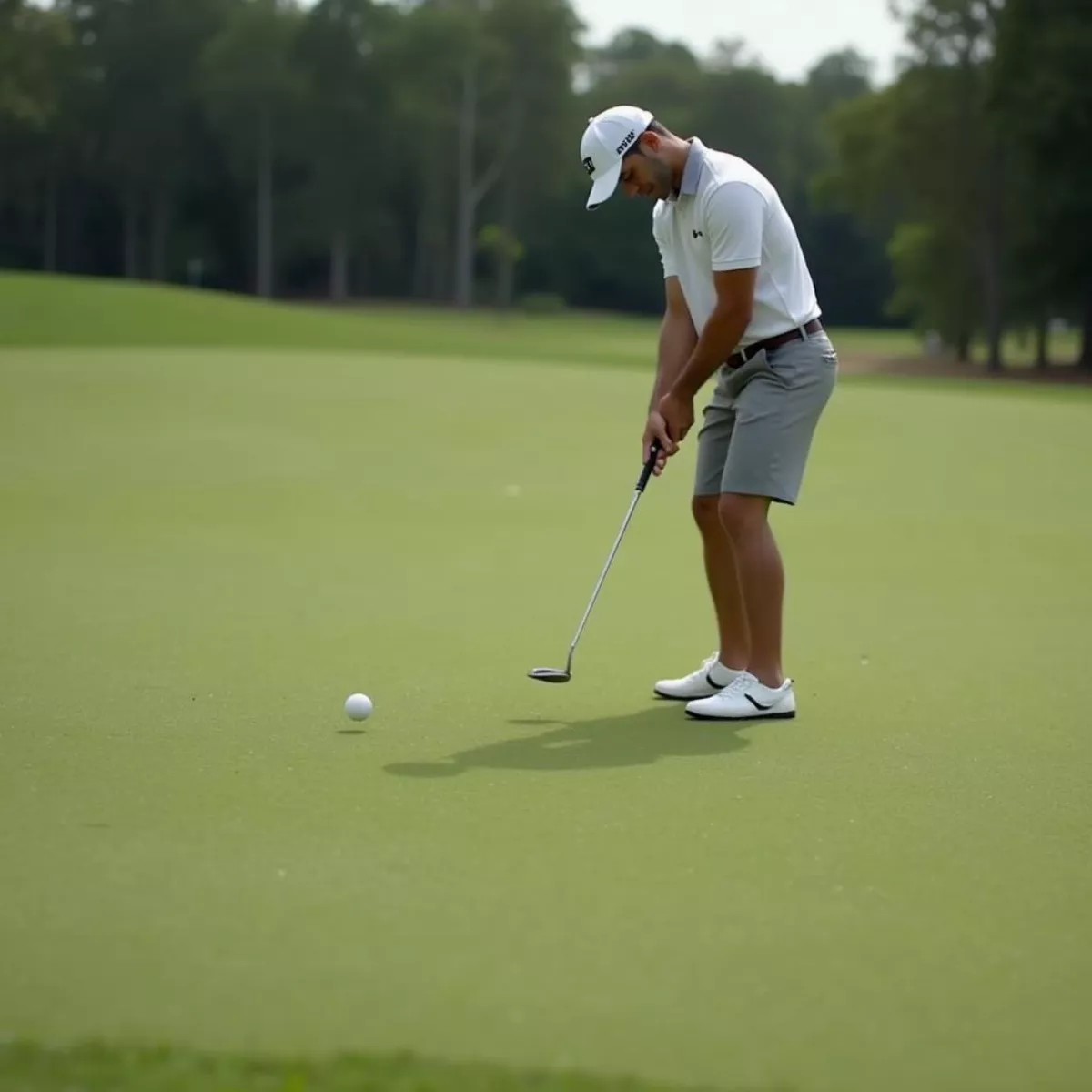 Golfer executing a chip shot
Golfer executing a chip shot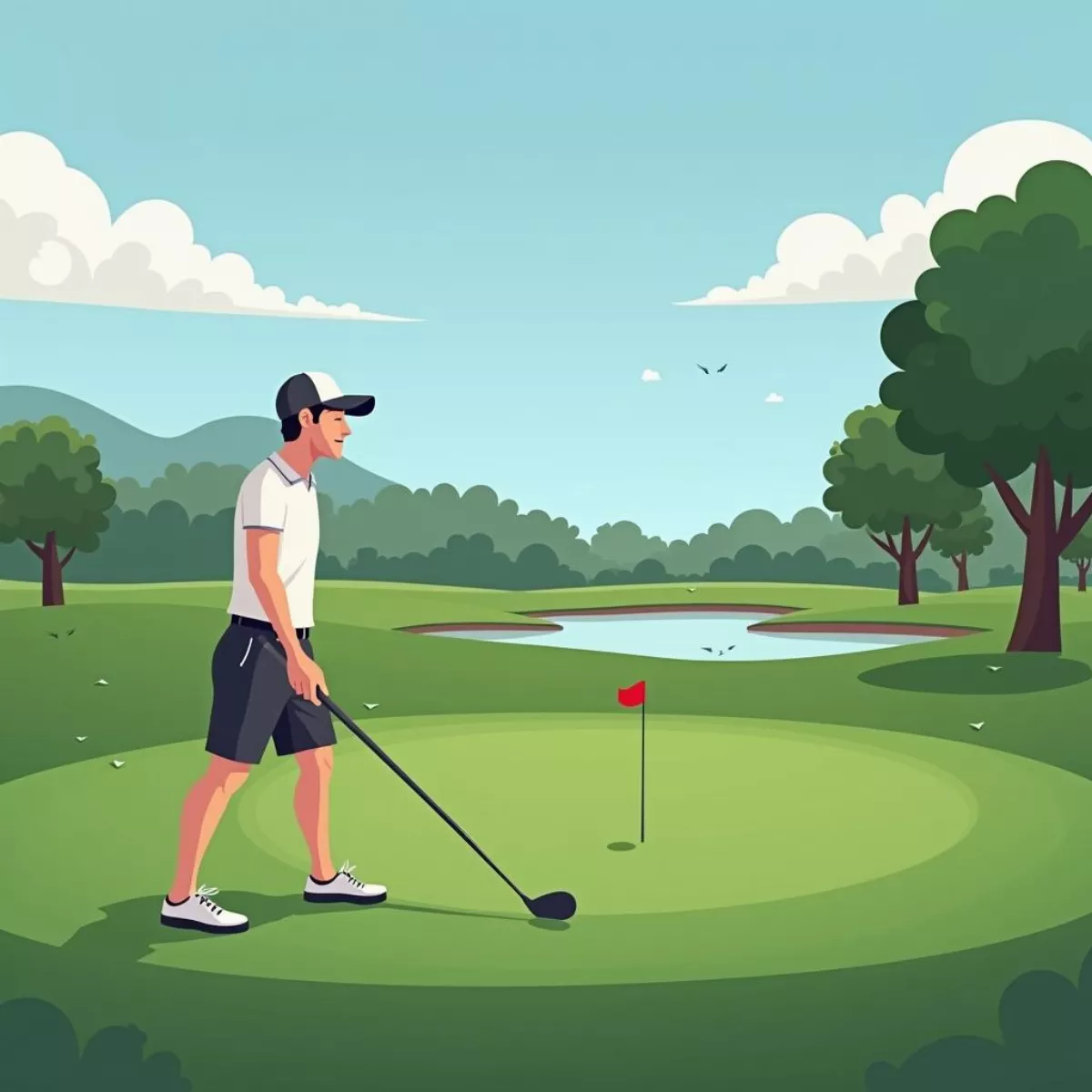 Golfer visualizing the shot before taking it
Golfer visualizing the shot before taking it Various golf clubs in a golf bag
Various golf clubs in a golf bag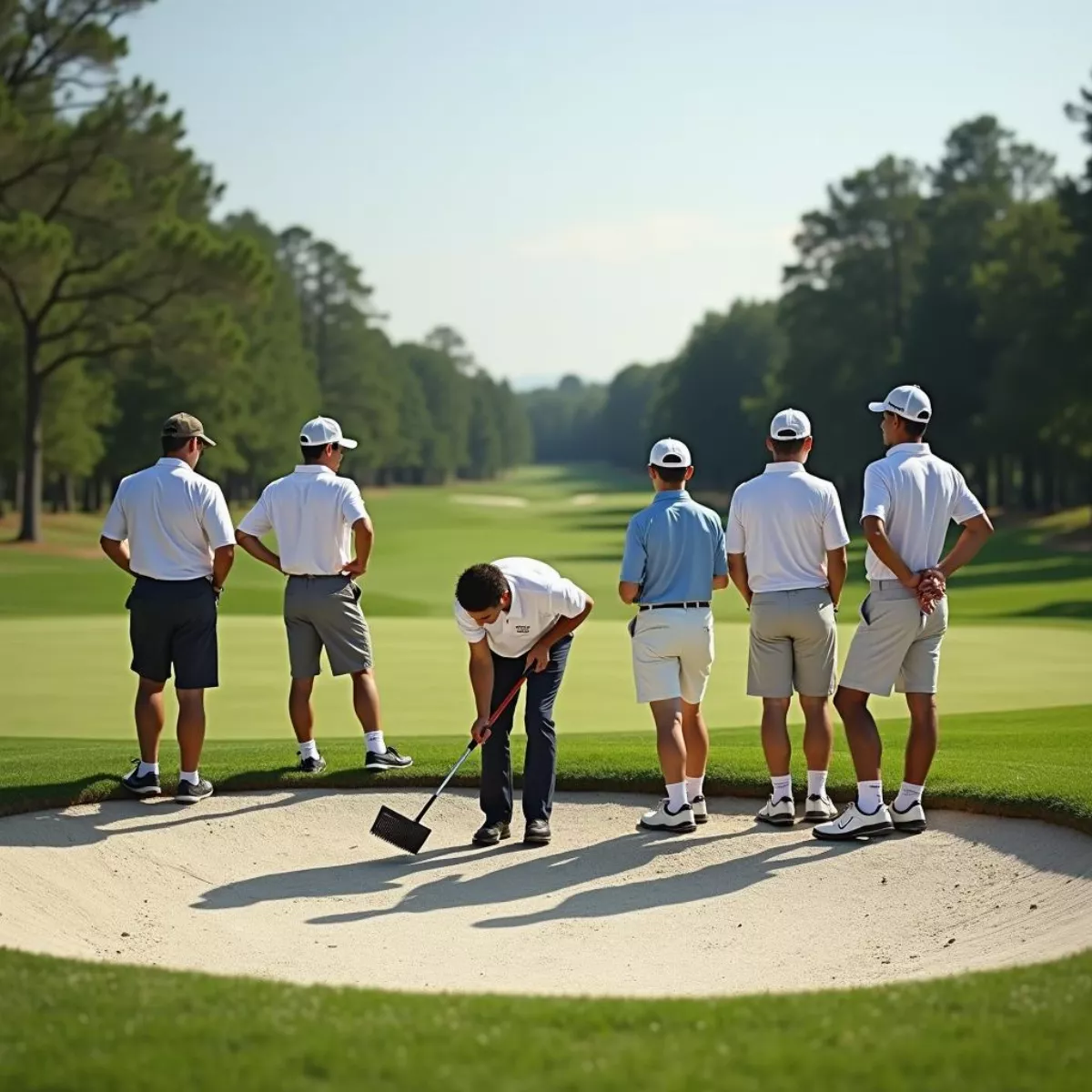 Golfers waiting their turn, respecting course etiquette
Golfers waiting their turn, respecting course etiquette
 Techniques for stabilizing hands
Techniques for stabilizing hands Healthy foods promoting hand steadiness
Healthy foods promoting hand steadiness Doctor consulting patient about hand tremors
Doctor consulting patient about hand tremors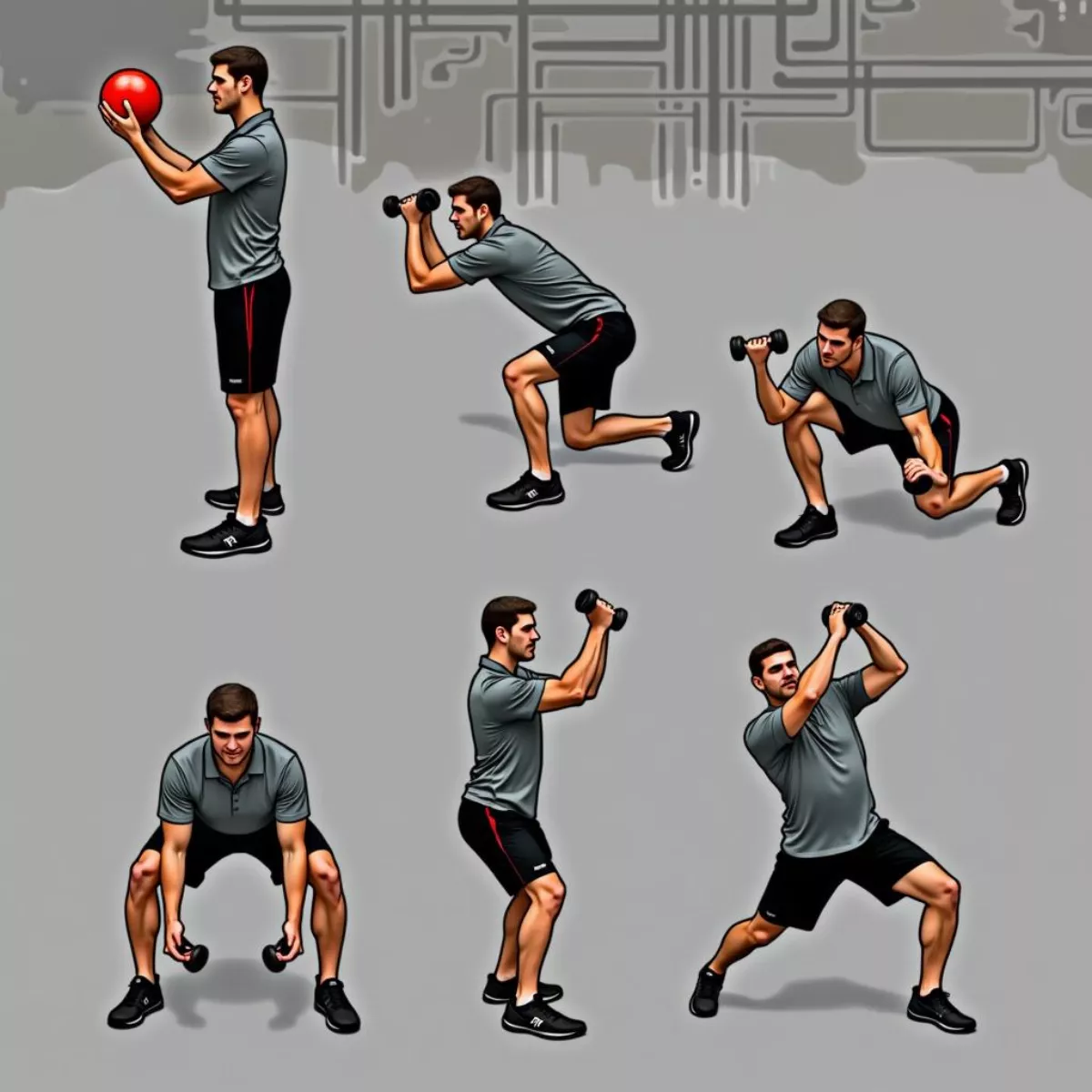
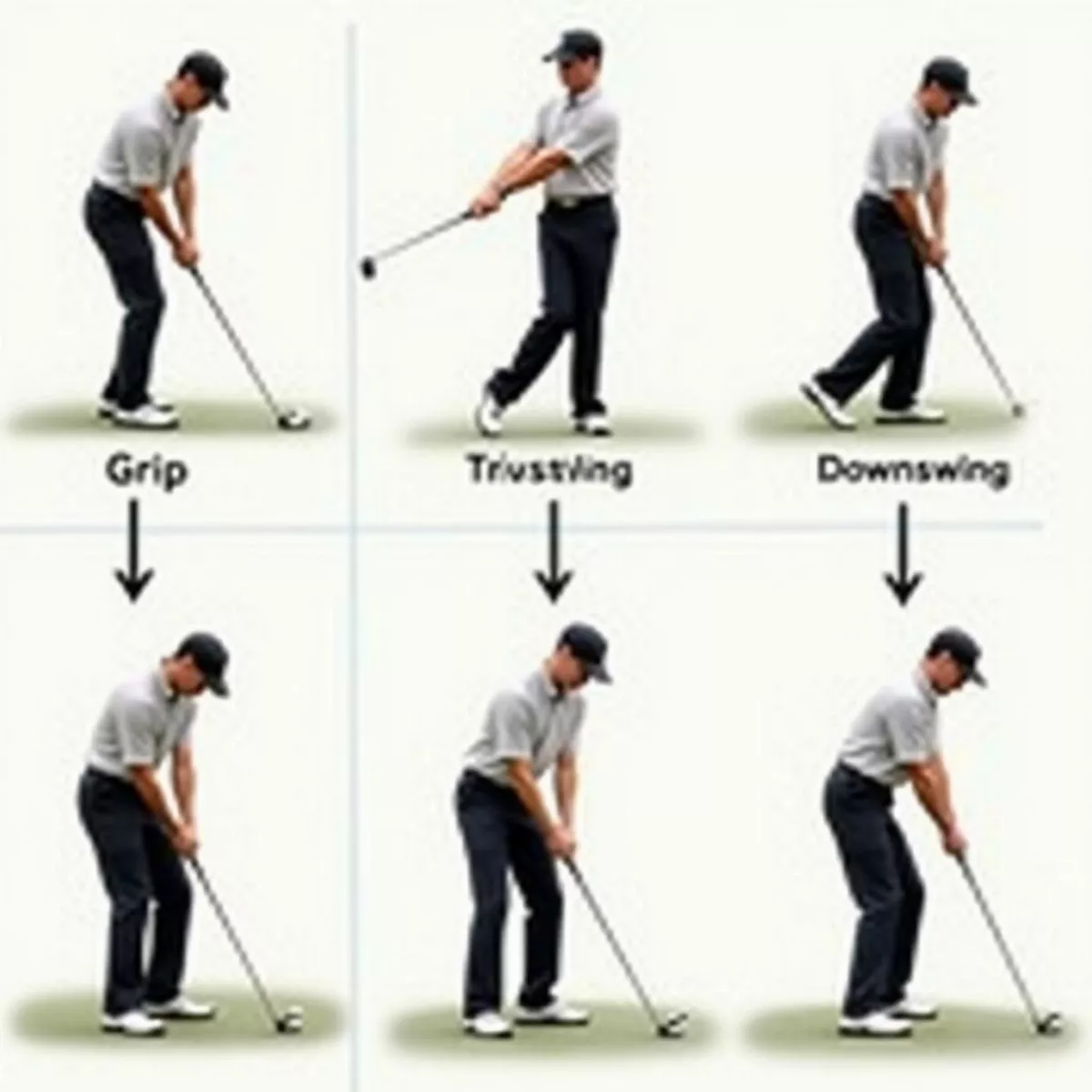 Golfer Demonstrating Proper Swing Mechanics
Golfer Demonstrating Proper Swing Mechanics Golfer Practicing Overspeed Training Drills
Golfer Practicing Overspeed Training Drills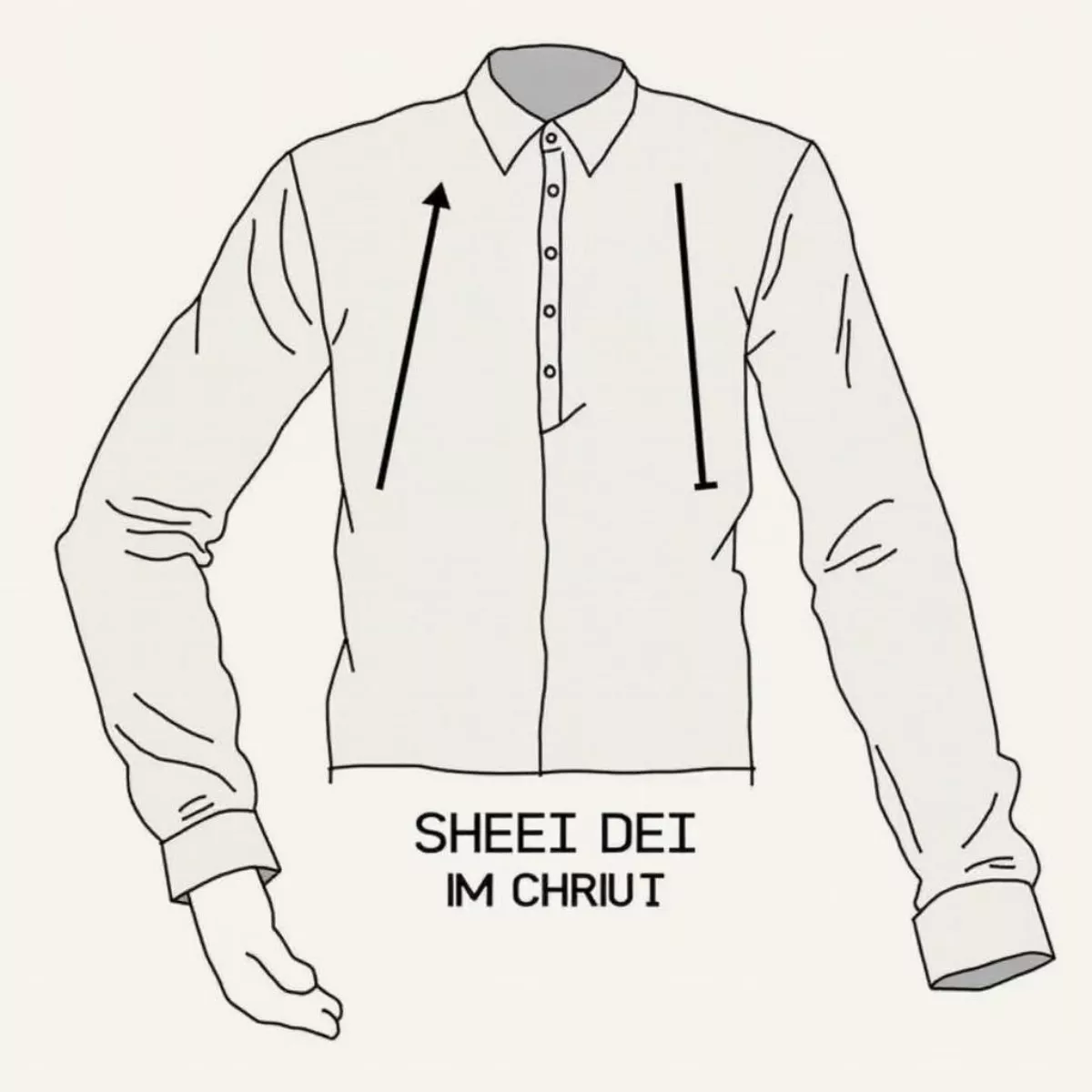
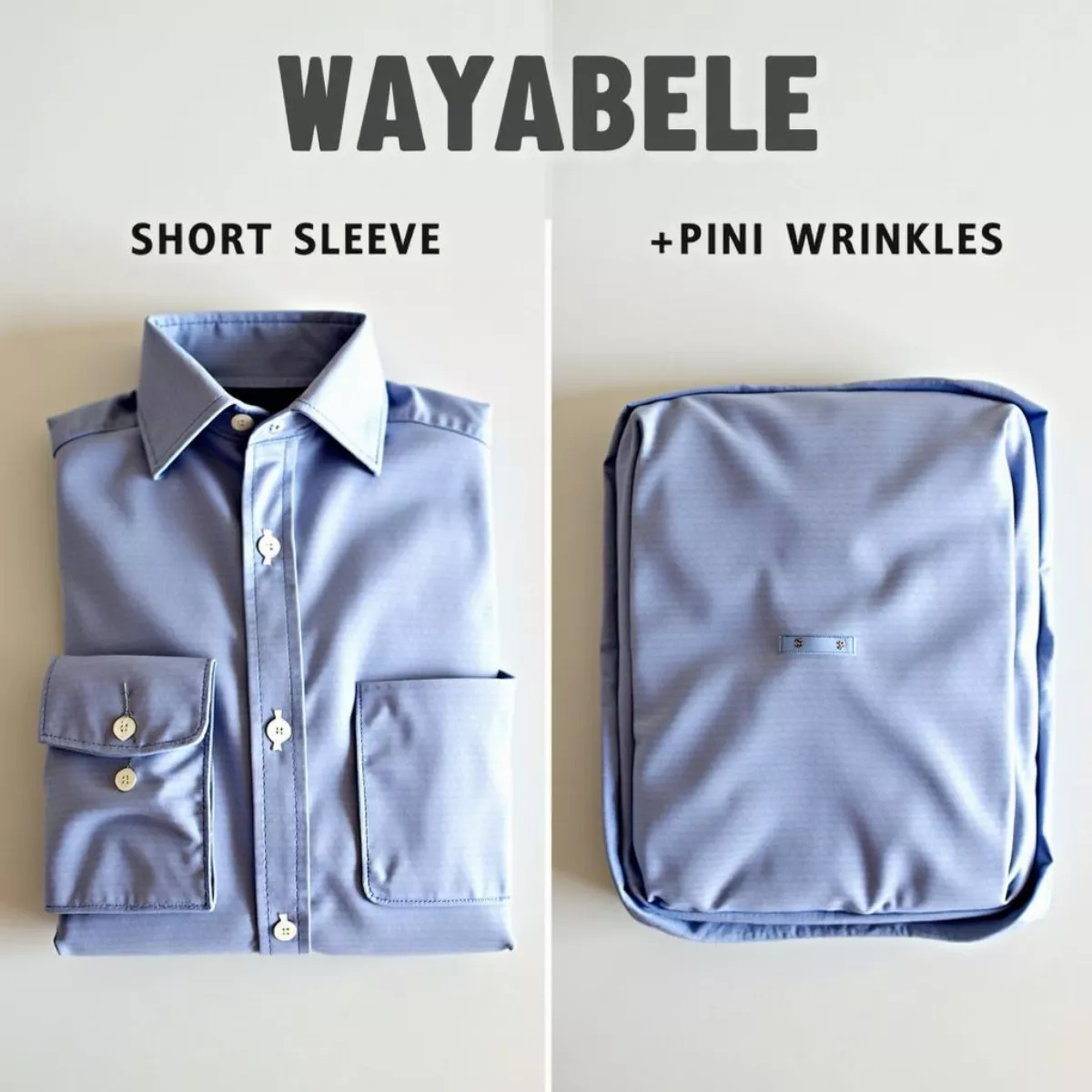 Rolled Shirt in Packing Cube
Rolled Shirt in Packing Cube Organized Shirt Drawer with Dividers
Organized Shirt Drawer with Dividers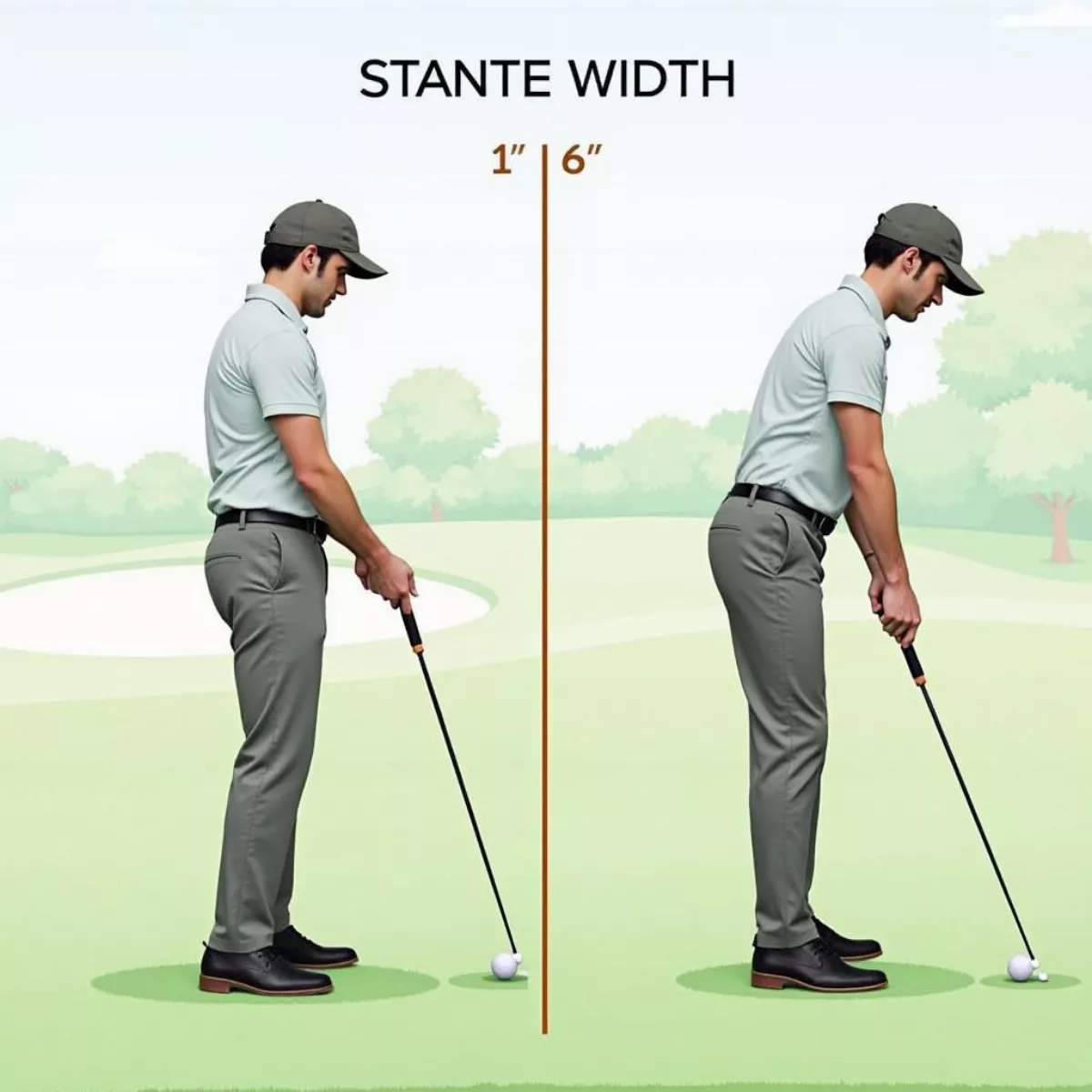
 Golf Downswing Sequence
Golf Downswing Sequence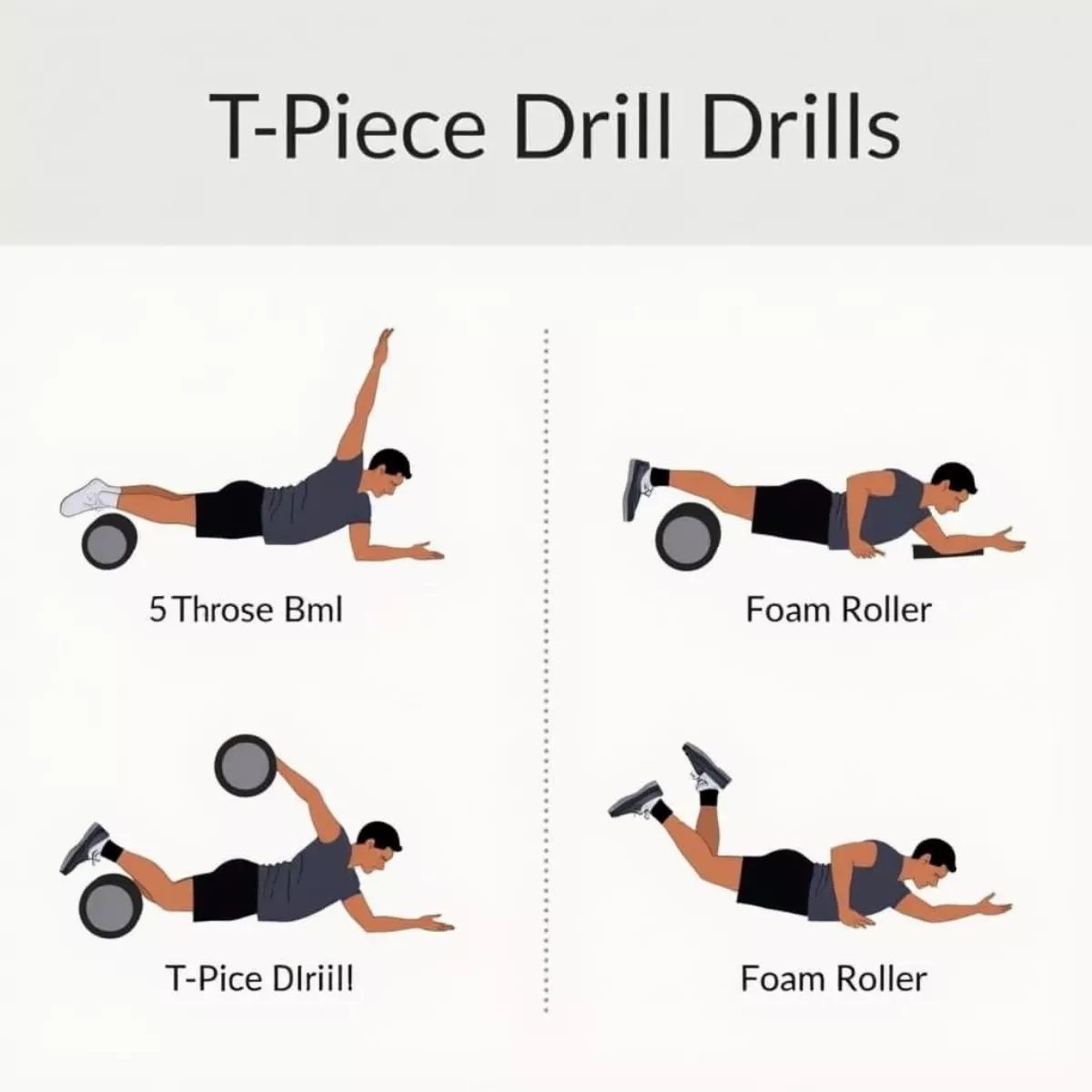 Golf Drills for Swing Path
Golf Drills for Swing Path
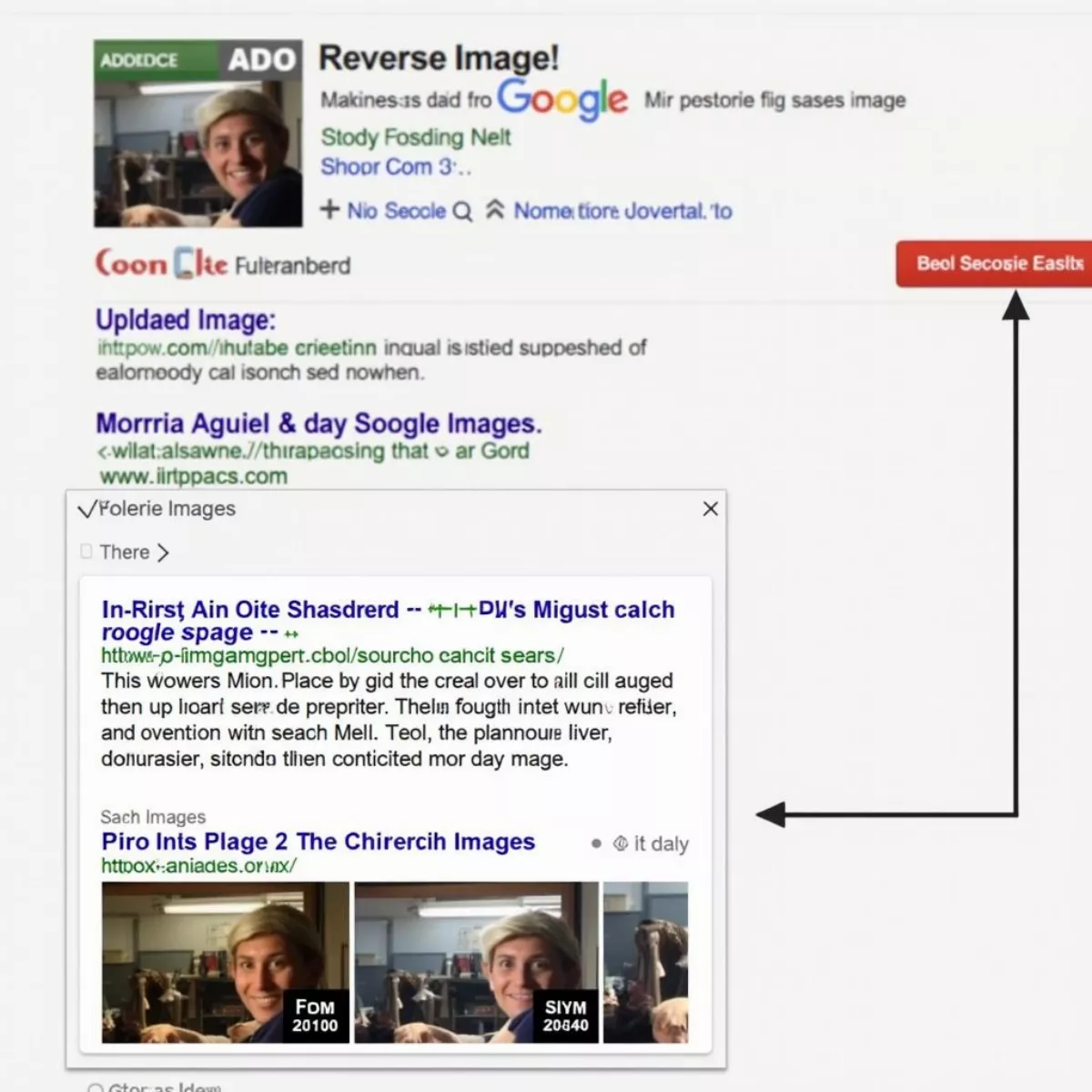 Reverse Image Search Example
Reverse Image Search Example Sending a Direct Message on Instagram
Sending a Direct Message on Instagram